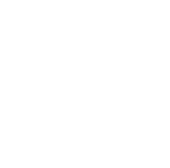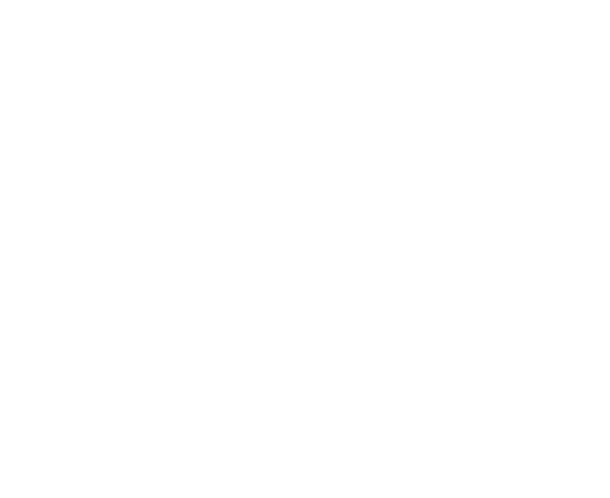 |
 |
 |

|
Christmas decoration
Photo: Fenestra Ateliers
|
|
 |
THE TECHNIQUE OF FLAME WORKING
-From small gestures to art: Christmas ornaments to contemporary lamp working
The range of glass made by the technique of flame working -or the technique of glass working in the flame/before the torch- variously describes jewelry, fluorescent tubing and lighting objects, botanical models, souvenirs, follies/frivolities (French folie: foolishness, English: Knick-knack: bric-a-brac: kitsch objects) and trick articles (English: friggers or USA: whimsies), laboratory glass, glass eyes, dispensing bottles, decorations and only occasionally art. Understanding the problem of transforming this technique of the small gesture and imitation into the monumental medium used by contemporary artists we will begin at the beginning of the technique’s roots in hollow glass beads and the Christmas tree decorations.
|

|
Posted 4 February 2015
|
Share this:
|
|
|
|
|
|
|
|
|
|
Thüringerwald
Flame, using a burner fueled by fat, oil, alcohol, talc and later, paraffin with air blowing into the flame whose intensity was adjusted by a glass tube bellows controlled by a hand or foot. This simple technique was suitable to use at home for the poor home workers who needed only a table and a blowtorch or lamp to work. In Germany the technique is called Lampenarbeiten, in Dutch Branderwerk. In the flame of the burner, glass canes and tubes were warmed and formed, blown or spun. These hand made canes and tubes were formed in advance by pulling a ‘thread’ out of the hot mass from the glass furnace.
|
|
|
|
foto Schott

The Danner Mandrel technique producing glass tubes
SCHOTT AG, www.schott.com
|
|
|
|
|
|
|
Glassbeads
Hollow beads made from these half-finished products were also produced by the famous Krebs family of Lauscha, Germany who by working a lead layer inside of the bead produced a silvery appearance so useful for their imitation jewellery and rosaries. Workers blew the very poisonous fluid lead with their mouths into the glass balls and sucked the rest out again. The German word Glasperlen was used to distinguish between glass and real natural pearls. The crown of the Dutch queen contains imitation glass pearls that are not lead worked, but filled with fish scales shining like royal pearls. Imitation was the main function of this technique.
Lauscha
Since 1597, the bead making process has been variously described, in Lauscha, in particular, from small silvery glass balls through the development of Christmas tree decorations. Blown into moulds made from wood, plaster or porcelain more complex forms evolved and thick-walled glass objects could be made. Herzog von Sachsen, Landgraf von Thüringen and Markgraf zu Meissen, gave the glassmaker Hanss Greyner from Schwaben and Christoff Müller from Bohemia the concessions. Together with the glassblowers of the Butzenglas (bull’s eye), including pharmacists’ glass bottles and drinking glasses they began production. Later, Justus von Liebig developed a less dangerous silver nitrate process. In Gablonz in Northern Bohemia making glass decorations became a sideshow of the glass industry, one result of Venetian glassmakers arrival in Erzgebirge to make artificial precious stones. Here, hollow glass beads developed into enlarged decorative balls but were strung together in long endless rows of shining beads adorning Christmas trees. Huge chandeliers in the form of Christmas-trees were also made by these strings.
The worshipping of trees practiced by all indigenous European tribes, survived the Christianization of both Scandinavian and Germanic regions: the evergreen pine was the most popular attribute in the folk play in Adam and Eve whose tree of paradise was overloaded with apples. On December 6 –and in the Russian orthodox area December 16- on Saint Nicolas Day they adorned a pine tree, Dutch: Klaasboom, German: Klausbaum, Swiss: Sanicklaus-Baümli, with sweets and apples, later borderless going over into the tree of December 24th, the religious day commemorating Adam and Eve, when Germans placed the ‘paradise tree’ inside their homes and hung fruit, nuts, waffles and cookies as symbols of the Holy Bread within it. Later, candles were added as a symbol of Christ. In the same room, a wooden pyramid -a forerunner of our Christmas stable- stood fully decorated with festoons, a star, angel and holy figures. In the 16th Century both forms fused becoming common practice among the Lutherans. We have to wait until 1800 to see the Christmas tree becoming a real trend throughout Germany. Loaded with glass decorations imitative of children’s playthings, fruit, streamers and shining tops, in all colours and in reliefs, with glitter or Venetian dew, the tree became the Christmases true centrepiece. The American Santa Claus only arrived around 1920.
In the same region, Leopold and Rudolf Blaska -father and son, descendants of seven generations of glassmakers originating in Venice, the home of the glass forming techniques- led the Blaska firm from 1865-1890. The Blaska’s created decorative glass models of flowers and lower animal species as educational material in museums and universities worldwide. Until 1910, the university in Utrecht, the Netherlands, ordered a hundred models of jellyfish from the catalogue of the Blaskas. Jellyfishes lacking the bone structure necessary for preservation by taxidermy’s stuffing procedure were the perfect candidates for the glass models. When George L. Goodale, then director of Harvard’s botanical museum in Cambridge, Massachusetts, USA, saw their glass fauna collection he decided to initiate a collection of glass flowers for his museum. Traveling to Dresden, Germany, Goodale persuaded the Blaskas to develop glass flowers and in 1890 they devoted themselves to making floral models for the Harvard University. This vast collection contains 847 life-size models representing some 780 objects and varieties of plants from 164 families, together with over 3,000 detailed models of enlarged flowers and anatomical section of various floral and vegetative parts of plants. The colours used were the same those used for the Christmas tree decoration: a jelly paint stained with aniline mineral pigments. Stained glass paints ruined the shapes reformed by burning paints directly into the glass. After years of experimenting the Blaskas decided to paint the glass forms only after the annealing of the glass and exclusively with this cold paints.
After 1867, the glassmakers could work with the Bunsenburner. Now the working temperature could be raised, stabilised and controlled, allowing for larger productions with more complicated forms. The same year, the mass production of thin-walled tubes became a fact. Pulled horizontally, the tubes are called the Maetz-Schuller and Corning techniques, and pulled vertically, de Vello and Hänlein, Danner and Philips techniques. Since 1912, Danner made it possible to pull tubes and canes in a continuous process: He discovered how to run a streaming hot glass mass out of the furnace over an iron rod and then by blowing air into the end of the slightly tilted pipe, that it caused the threads to open, thereby forming a hollow tube. Similarily -but without using air- canes could be made that kept the threads solid. After annealing, the tubes are cut in lengths of one and a half meters. Currently, the Schott factories in Germany alone produce on a yearly basis 80,000 tons of capillary tubes and canes!
The flame worker forms these canes in smaller parts by heating and pulling them into even smaller parts with ‘points’. These points are used as handles for manipulating or blowing the glass. The particular glass used to make these tubes is called Thüringerwald glass named for the place of its accidental discovery, since Martinrodaer sand contains less aluminum oxide it produces a clearer glass after being heated and shaped.
|
|
|
|
Modern flame workers
German emigrants carried the Christmas tree decorations with them to England, America, Canada and Australia. American missionaries spread this tree throughout China and Japan.
Manufacturers in Lauscha now mass-produce and export worldwide. All the wooden moulds are still stocked at the Krebs family’s glass factory continued to be used to make our decorations.
Modern flame workers can choose between this soft glass or the hard, tempered or hardened Borosilicate known by the trade marks Duran (D), Pyrex (USA), Moreno (I) and Vulcan (A). Both glass types are characterized by their compatibility with each other: All glass techniques require that glass being fused together to have equal expansion and shrinkage rates....fusing requires compatibility. Handmade coloured rods and tubes are expensive, but can be worked in lower temperatures because they are easily shaped at 1600 Cº.
For processing a harder typed of glass one needs a burner with gas-oxygen of for instance the Zenith type, because the temperatures for melting this type of glass must be between 2000 and 2500 Cº. Workers colour this type of glass with oxides, metal salts, frits or powders. The flame’s atmosphere oxidizes or reduces, determining the exact shade of colour. Cold glass can be worked with cold enamels, stained glass paints, etching, sand blowing or engraving. Additionally, the flame worker’s glass and burner used in manipulating hot glass requires a roller, a glass cutter, mushers, graphite rods and paddles, tweezers, a tungsten pick, scoring knife, scissors and nippers.
Glass used in laboratories needs to be resistant to changes in temperatures, chemical compounds and must be fireproof. Therefore, borosilicate glass is used. Working temperatures for the finished products can rise to 520 ºC. Before the flame, glass tubes are blown and formed into devices, industrial installations (for instance the pipelines for dairies), valves, unions and containers like thermos bottles, injection needles and measuring devices such as cups, jugs, flasks and retorts.
In the late 19th Century fluorescent light tubes were made from glass tubes. The French George Claude filled a tube with neon gas by connecting two high voltage electrodes onto both sides of this tube. A radiant red colour soon found its way into several applications for decoration and advertising purposes. Later, different types of gas were used for filling tubes and more colours were available Mercury, for instance, made a blue light. Tubes used for neon lights are primarily in elements of 2 meters with ø 16 mm and through flame working techniques tubes are then formed, curved and closed.
During the Art Nouveau period lots of decorative drinking glasses were made using the flame working technique. Artists became involved in making beads thinking of them as little sculptures. However, breaking loose from the legacy of imitation and decoration seems challenging at best, weight down by the literature on the history of flame working. Presently, most contemporary artists following the Balka’s approach of handling this technique function more as magician and surgeon specialists rather than working in bigger gestures and inspired by grander thoughts. Artists using glass industrially formed by this technique as a ‘ready made’ blank have brilliantly avoid this trap: Louise Bourgeois, Mario Merz, Bruce Newman and many others. While not manually involved in the process of making glass elements themselves they were able to have more cooler, more conceptual approach to successfully working with glass.
With small gestures yet with a monumental vision one can enjoy the skilled works of Richard Meitner, Helga Reay-Young, Paul J. Stankard or Mark Matthews. Stankard says about his work: “The magic of what I do consists of taking inorganic material, melting it to 2,000 degrees Fahrenheit, and transforming it into an organic illusion.” The task of the glass artists using the flame working technique now will be to continue releasing the technique from the kitsch standard it had by years of imitation.
Angela van der Burght ©2003 This Side Up!
|
|
|
|
|
|
|


